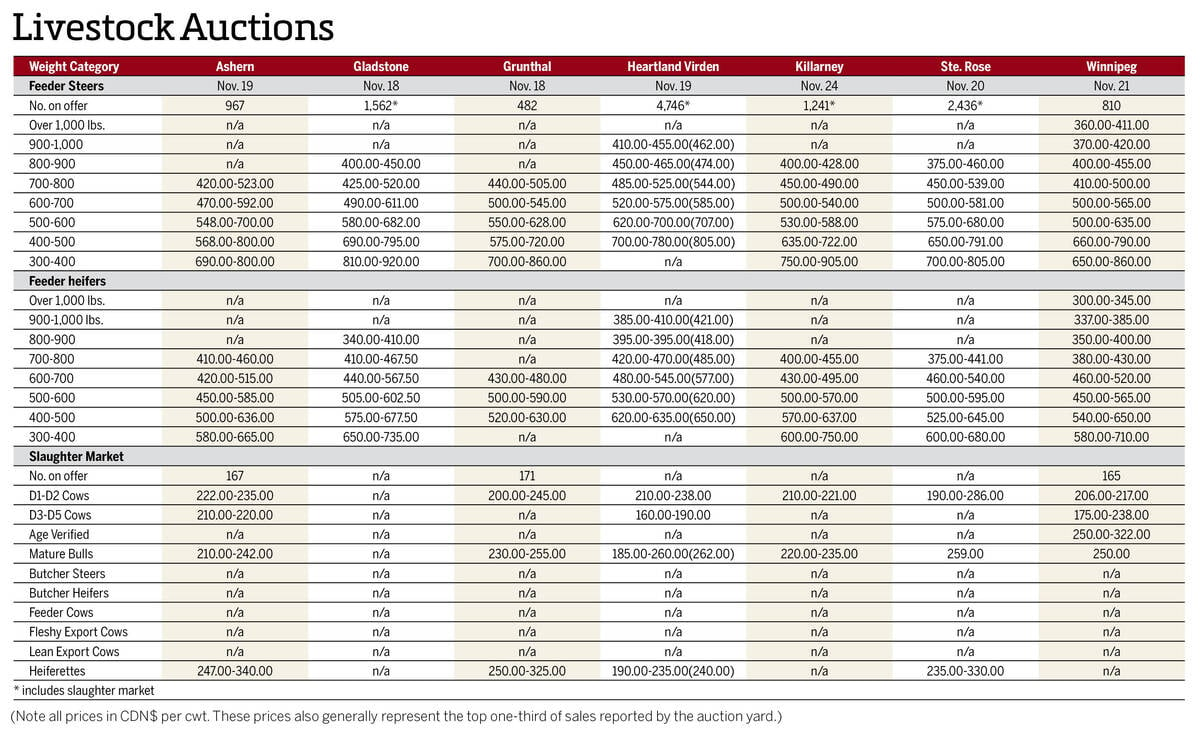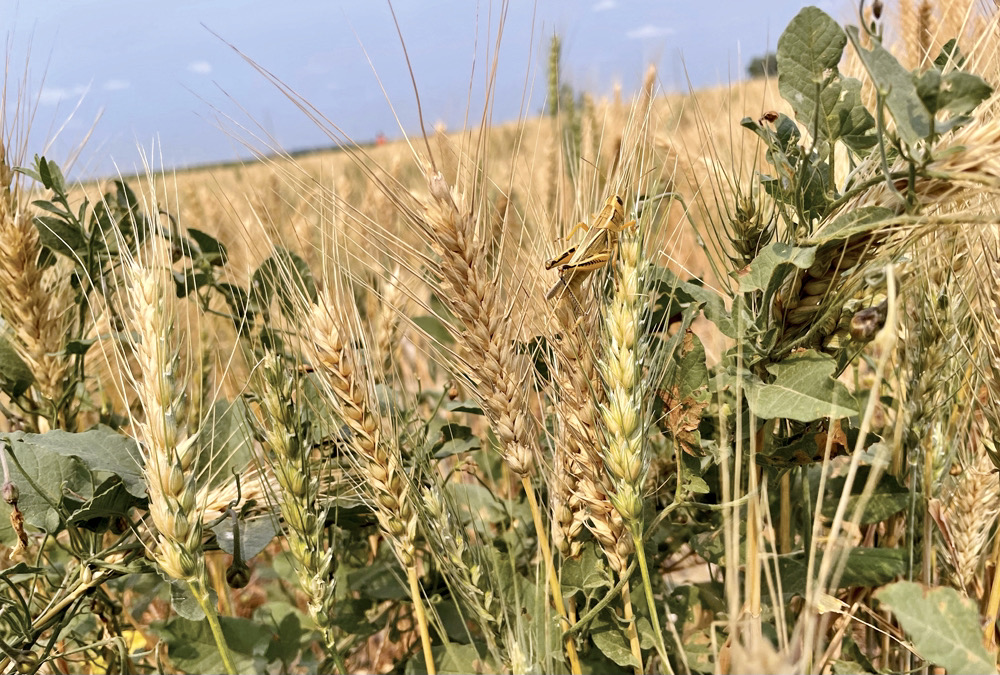This year’s drought seriously cut into Canadian crop production, although the full extent of the damage remains unknown as harvest operations continue across the Prairies. That production uncertainty has been a supportive feature in the canola market for some time and should continue to be. That said, the upside may be limited, as demand is rationed at these higher levels.
After growing 18.7 million tonnes of canola in 2020-21, even the most optimistic industry estimates predict canola production at least three million tonnes below that, with some trade estimates dipping below 12 million tonnes. Statistics Canada’s first survey-based production estimates of the year were to be released Aug. 30 — after this article went to print — and should provide some nearby direction for the futures.
Read Also

Manitoba cattle prices – Nov. 24
Cattle prices from Manitoba’s major auction marts for the week of Nov. 18-24.
Canada hasn’t seen a canola crop that small since 2007, when production came in at 9.6 million tonnes. More recently, the five-year average for production comes in at 20 million tonnes.
The industry has grown used to large canola supplies, with both exports and the domestic crush seeing sizable growth over the past decade. There’s no question demand will need to be rationed in 2021-22, but whether that means prices need to go higher remains to be seen, as much of that rationing work may already be done.
Canadian spring wheat is facing a similar supply reduction in 2021. However, that smaller crop may not be fully priced into the Minneapolis spring futures to the same extent as seen in canola — at least according to some analysts.
Spring wheat futures have reached a plateau from a chart standpoint over the past month, with the nearby contracts holding above US$9 per bushel. One trader estimated that while canola end-users may have already booked 80 per cent of their coverage for the next five months, spring wheat buyers might only be about 30 per cent covered. The remaining 70 per cent of buyers could be in for a rude awakening if Canada’s crop comes in at the lower end of expectations, which would likely support the futures prices.
There is no futures market for durum, but Canada is a key player in the global market and cash prices have climbed sharply higher in recent weeks, topping $900 per tonne in Alberta and in the upper $800s in Saskatchewan.
For soybeans and corn, the bulk of the North American harvest is still some time off, with U.S. Midwest growing conditions over the next few weeks the key market-moving factor.
Condition ratings for both crops deteriorated in the weekly U.S. Department of Agriculture report for the week ended Aug. 22, but prospects were thought to be improving, with most of the Midwest seeing some much-needed rain.
Canada’s soybean and corn crops are also thought to be in decent shape, with most of the production focused in the east.
















